by Jenny Rose | Mar 7, 2019 | A Flourishing Woman, Creativity
Lately I’ve been thinking about how much living a life resembles writing a story.
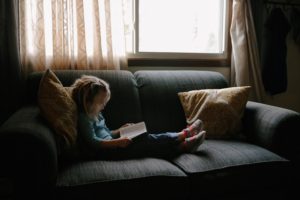
Photo by Josh Applegate on Unsplash
We love our stories, whether they be in the form of songs, film, books (digital or tangible) or spoken language. We love the nonfiction of history and science, memoirs, and fiction. Story has anchored me to life since before I learned to read.
During my writing hours I’m engrossed in creating characters and weaving them together. One scene gives rise to another. There must be action and movement. There must be some kind of story logic. Every word must help drive the story forward. Characters need to be believable and recognizable in their behavior and growth. As an audience, we want to see characters change and learn. We want to commiserate with and applaud our favorite characters. We want them to do well.

Photo by Igor Ovsyannykov on Unsplash
As a writer, I don’t have total control or knowledge of my story. I create a rough outline, create characters, choose a setting, and start writing. If I’ve done well with my characters, the act of writing animates them into becoming collaborators rather than pawns. I’ve learned the characters who remain passive and one-dimensional are weak and need to be reworked. I may have a direction I want my characters to go in, but strong ones frequently refuse to comply with my outline and notes and we wind up sitting glaring at one another with our arms folded, my character looking out from the laptop screen at me at the keyboard. The flow of the writing stops then, until I set aside my rigidity and work with other possibilities.
This is exactly like life. How often have we gone down a blind alley and wound up with our noses against a brick wall but been too stubborn or exhausted or despairing to retrace our steps and choose another direction? How often have we taken a well-worn path of anxiety and wound up in a trackless desert or marsh, floundering, miserable and lost?

Photo by Joshua Earle on Unsplash
As we journey through the story of our own lives, however, our view is from the bottom of the valley rather than from a high mountain from which we can see the whole thing. We live our stories one moment at a time, losing sight of the beginning and never knowing the end until we reach it. Our lives are filled with things like visits to the bathroom, brushing our teeth, lost car keys, bills, errands, flat tires and dead car batteries, and colds.
But these details, so ubiquitous in what we call “real life” add nothing to a great film or book. They’re not sexy and entertaining. Nobody wants to watch Wonder Woman floss her teeth or cut her toenails. We don’t see our favorite heroes spending hours hunched over their phones, tablets and games.
We can’t tell the sweeping story of our lives while we’re living them. We know when things feel good or bad, but we don’t look beyond that most of the time. We’re more concerned with our discomfort and disappointment than we are with the inherent ebb and flow of life.
We don’t think about what our story requires. We don’t see our most difficult times as turning points essential to our story.
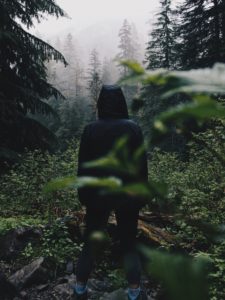
Photo by Andrew Spencer on Unsplash
As a writer, however, I know tension, conflict and obstacles are necessary. They create movement and growth. They create change. They force characters to reveal weaknesses and summon strengths. They teach resilience and test faith.
What would it be like if we could watch our own lives as though watching the next big superhero movie? What if we could revel in the setting we find ourselves in, even if we decide to escape it and find a new one? What if we chose to feel inspired by the unpredictability of our unfolding lives and heartened by the way obstacles shape us?
What if every experience was an essential, beautiful part of our story?
What if . . . ?
All content on this site ©2019
Jennifer Rose
except where otherwise noted
by Jenny Rose | Dec 20, 2018 | A Flourishing Woman, Creativity
Sometimes I spin my wheels.

Photo by Arun Kuchibhotla on Unsplash
I map out a week, a day, a list of directions with mileage and time apportioned to each part of the journey. I ascend the stairs to my expectant workspace, turn on a lamp, plug in a single string of red Christmas lights, light a candle and lift the laptop lid. Outside my windows, tiny snowflakes fill the air. The old-timers here say, “Little snow, big snow,” meaning small flakes indicate significant accumulation. I don’t know if this is always true, but I notice the size of the flakes. As I check the weather forecast, my e-mail and the headlines, my gaze is drawn repeatedly to the window. The hypnotic falling snow is the same color as the sky. Disordered ranks of brown cattail stalks stand ankle-deep in the sleeping pond. An infinity of branch, needle and twig is adorned with an even greater infinity of frozen white crystals, falling soundlessly and blurring the colors of stone and wood.
No snowflake ever falls in the wrong place — Zen saying.
It is then that my wheels start to spin. I have set aside this morning to write. I stare at the laptop screen, fingers on the keyboard. Nothing happens. Seeking inspiration, demanding creativity, I make notes, review notes already made, catch up on reading from favorite blogs and my current stack of books. I search for some solid traction so I can move through the day according to my tidy, efficient plan, but I find myself returning to the window, spellbound, empty of creativity or inspiration but full of wonder at the subtle beauty of the winter snow.
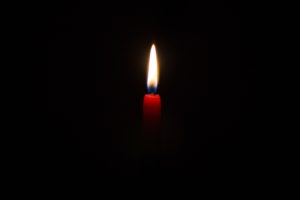
Photo by David Monje on Unsplash
It’s the contrast that catches my attention. My aerie is filled with books, beloved objects, the tools of my life. The warm sticky scent of a red candle fills my space. The red desk lamp I bought at Goodwill more than 10 years ago lights my worktop. My comfortable chair and footstool beckon me to sit and read. The room is warmed by the chimney rising up through it from the woodstove below. I hear my partner talking to our old cat in his office below me; not the words, but the loving sound of his voice that is reserved just for her. He is at his work and I am at mine, cocooned in our private spaces in our slouching farmhouse with lights and heat and the rinsed breakfast dishes stacked on the counter waiting for hot water and soap. We have things to do today, errands to run, people to talk to. We have plans and intentions.

Photo by Galina N on Unsplash
But outside, just beyond the single pane of glass in the old attic windows, is a monochrome world, delicate and cold, still and peaceful. The snow falls without effort. Each flake finds a resting place on the bodies of the trees or the water or the earth. The wood and stone have no place to go and nothing to do. They dwell in the vast power of simply being. The snow settles lightly.
I think about living minimally, weeding out my clothes, the week ahead, money, the perfect Christmas gift I can never find for a loved one, and whether or not we’ll make it into town to do the errands today. I think about drafting a query letter to send out with my first manuscript, which I just finished editing for the fifth or sixth time. I think about reviewing the water rescue information I’ll need next weekend when I travel with a couple of colleagues from work to get deep-water lifeguard certified. It will be a busy week. My careful plan blocks out this morning for coming up with this week’s blog post. I will write … I will begin now … My idea is … Ready, set, go!
My wheels spin, and I look out the window at my little black car, which is wearing a white blanket, and recognize the sinking feeling of no traction. No amount of urgency or frustration makes snow, slush and mud into solid ground. No amount of bullying makes my creativity compliant. I get up. I sit down. I glance at my journal, reread a paragraph in a book, look at some poetry. I feel restless and resentful of my own recalcitrance.

Photo by Aaron Burden on Unsplash
Outside, the snow falls, serene and inexorable as the fading light here in the last handful of days before winter solstice. I open the window and lean close against the hushed, frigid world outside it. My little candle, my lists, my inconsequential blog and my plan for this morning make no impression outside the window screen. It’s time for sleep and dreaming, time for rest. The forest knows, the earth and water know. They lie peacefully under the low sun and the long nights.
My wheels spin, making a noisy mess, throwing clods of half-formed ideas, provocative questions, lingering music of beautiful words, comments and conversations and observations, going nowhere. No traction. The morning is passing. I have not accomplished what I wanted to. I’ve neither rested with the winter snow nor produced a post. I’m torn between self-disgust, resignation and amusement. I think about heavy, cold chains; red, numb hands; wet jeans and sodden gloves; the steady clicking of hazard lights; the feeling of being late and time running out; the texture of wood ash, cat litter, sand and salt thrown onto snow and ice; and the futile laboring of spinning wheels.
The morning is gone. In half an hour we’ll try to go into town. My partner is out with the snow shovel. I shut the window, sit down and open the laptop. I type “Spinning My Wheels” and begin to write this post.

Photo by Teddy Kelley on Unsplash
All content on this site ©2018
Jennifer Rose
except where otherwise noted
by Jenny Rose | Dec 13, 2018 | Emotional Intelligence
My partner and I have been watching Lie To Me, a television series that ran on Fox from 2009 to 2011. The show is based on the work of Dr. Paul Ekman, the world’s greatest expert on facial expression.
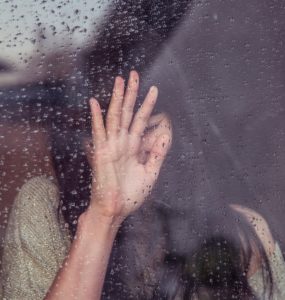
Photo by Milada Vigerova on Unsplash
I am absolutely fascinated.
All my life I’ve been extremely aware of body language and what I’ve always called the “energy” of the people around me. I’ve frequently had the experience of picking up the hidden emotions of others and taking on responsibility for them, a result of ineffective boundaries. When I was trained in emotional intelligence I cleaned up my poor boundaries and many other destructive habits. I also began to openly and unapologetically trust myself after a lifetime of cognitive dissonance caused by the difference between words and nonverbal cues from others.
Now, at last, I have real world validation for the way I can sometimes “read” others. It’s not magic, and I’m not a freak, a fantasist or crazy. Science now recognizes the universality of human facial expressions for basic emotions (fear, surprise, contempt, happiness, sadness, disgust, shame), and technology allows us to slow down video footage and capture microexpressions, which occur in much less than a second, as we speak and interact with others.
Our words can lie, but Dr. Ekman’s work reveals our bodies give away our emotional experience in all kinds of ways of which we’re not even conscious. The way we hold our hands, a slight shoulder shrug, the way we move our heads, how we direct our gaze and small, fleeting expressions passing across our faces with the help of 42 complex muscles can contradict our words.

Photo by Joshua Earle on Unsplash
We know some people have a great deal of difficulty reading and interpreting body language and subtle cues, while others are skilled at it. Paul Ekman’s work and research makes it possible for anyone to consciously learn how to detect emotional deception. Every episode of Lie To Me incorporates not only a story line told by actors, but also footage from real people — politicians, leaders and other famous and infamous folks — displaying exactly the same facial expression or body movement. It’s amazing.
Some people are difficult to read. I’ve worked hard to develop a stone face and have often been told I’m opaque. My oldest son is extremely provocative, and my expressionless countenance stood me in good stead when he was a teenager and woke me in the middle of the night to tell me he was going to ski naked at midnight with a girl in one hand and a bottle of whiskey in the other. Any show of outrage or upset only egged him on, so I learned to control myself. I’ve also had some exposure to narcissists and other Cluster B people, who feed on emotional energy, and I know the best way to deal with them is to become a grey rock, that is to be so completely flat, uninteresting and uninterested that they move on, a technique far more effective than trying to get rid of them directly. Yet even though I may be harder to read than average, I know my body language gives me away every time, or would to a trained observer.
(Fortunately, my teenage sons were not trained observers. Let us be thankful for small mercies.)

Photo by Gary Bendig on Unsplash
Sedating substances and Botox injections can interfere with or blunt muscle movement and smooth out microexpressions, but eventually we all give our truth and lies away. We can’t help it. Microexpressions and body language are often totally unconscious on our part.
I’ve been told I have an intense gaze that can make others feel uncomfortable. I suspect this is a function of the focus and presence necessary to evaluate how the people around me present themselves as I compare what they say with what their expressions and bodies tell me. If I feel confused or receive a mixed message, I always go with body language. Words lie too easily and too frequently. We lie to ourselves and we lie to each other. When I experience cognitive dissonance as I observe and interact with others, now I no longer tell myself I’m making things up. Even more importantly, I don’t allow other people to make me feel bad and wrong. Nobody likes to have their cover blown, and someone with things to hide is naturally not going to appreciate feeling exposed. Rage, denial, projection, gaslighting and other abusive behavior can all be effective distractions from the truth.
A lie comes with a cost. The truth may come with a cost as well. We navigate our lives between the two, making the best choices we can. I have no desire whatsoever to uncover the secrets and lies of others, but I am interested in being able to evaluate if there are secrets and lies. I don’t believe we owe others 100% of our emotional truth, but every healthy relationship and connection requires some level of trust, and I don’t want to be with people I can’t trust. I think of mixed messages as a red flag.
It’s amazing to learn, after all these years of mysteriously and often uncomfortably picking up more information from others than I ever wanted to know, that inconsistency is a red flag. Words that are incongruent with facial expressions and body language are untrustworthy. My ability to recognize concealed emotions is not hateful or crazy.

Photo by Cristian Newman on Unsplash
Frequently we don’t seek to deceive others as much as we wish to deceive ourselves. The lies we tell ourselves are perhaps the most powerful of all, and we protect those kind of lies the most ferociously.
It’s important to understand recognizing the presence of a lie does not mean we know the substance of the lie or why it’s being told. As a writer, I find that why infinitely interesting in its possibilities. What kinds of things do we conceal? What motivates us to do so? What are the consequences of our various lies, great and small, to ourselves and to others? How do our bodies unconsciously communicate our emotional deception? If we spot emotional deception in someone we’re close to, what do we do with that information? What kinds of lies are terminal in relationships, and what kinds survivable? How do we forgive ourselves and others for emotional deception?
The looming presence of social media in our culture means many of our daily interactions, perhaps most, are not face to face, which greatly diminishes the complexity and depth of human communication and makes emotional deception easy. Body language is invisible. Tone, pitch and other verbal clues and idiosyncrasies are unheard. We use sanitized little emojis to represent our meaning, or at least to represent what we want others to believe our meaning is.
Paul Ekman has written several books I’m looking forward to exploring, and one can take online classes and learn more. I intend to learn a lot more.
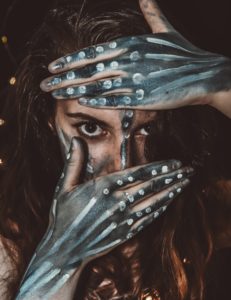
Photo by Joshua Fuller on Unsplash
All content on this site ©2018
Jennifer Rose
except where otherwise noted
by Jenny Rose | Aug 30, 2018 | A Flourishing Woman, Creativity
It’s been a busy week. I haven’t done a lot of writing. Some weeks are about notes, research, sudden creative inspirations, edits and days with a foot in two worlds, the world of the auto shop I’m sitting in this minute with a rattling air conditioner in the window to combat the 100 degree heat index outside while mechanics do surgery on the inside of my old Hyundai to fix the air conditioning, and the world of my imagination.
Other weeks are just about life — activity, interaction with others, appointments, friends and unexpected opportunities, along with the small stories of household and routine, like the AC in the car suddenly ceasing to breathe chill and becoming as thickly humid and overheated as the land’s late August exhalations here in Maine.

Photo by NeONBRAND on Unsplash
A long time ago, when I was a teenager, I got my first job as a summer lifeguard at the local outdoor pool. I loved it. I got trained as a water safety instructor, which means a swim teacher. I was also an IV-certified EMT doing volunteer fire and rescue work.
I’ve never lost my love of water and swimming, and I visit the pool once a week here in Maine. As a regular, I’m familiar with the staff and the facility. A couple of weeks ago one of the pool staff mentioned a part-time position was opening up. Before I left that day I applied for the job and was set up to re-certify as a lifeguard, more than 30 years after the first time. Thirty years. How did that happen?
Now, of course, the process for getting certified is all online. There’s a book, a big, brightly illustrated textbook filled with pictures and graphics, but all the material in the book is also online. The first time around, I learned out of a small paperback manual with black-and-white line-drawn illustrations. The online course is about seven hours of audio, video, multiple-choice questions and written material. At the end, there’s a test. A few hours at the pool in order to practice skills (the most important part) completes the re-certification process.
I’m a good student and confident of my skills, but I unconsciously expected much the same learning experience I had the first time around. However, lifeguarding techniques have changed. The emphasis used to be on personal safety, as drowning people often panic and become dangerous to their rescuers. I spent a lot of practice time in the diving well with a huge college kid built like a tank while he pretended to drown and then tried to drown me as I tried to save him.
Now, there’s great new equipment and gear that make water rescue considerably safer, and the techniques have changed accordingly. Also changed is the way one approaches CPR. When I learned and performed ventilations as a first responder, it was, literally, mouth-to-mouth. Now, lifeguards are equipped with fanny packs in which they carry plastic ventilation masks and Nitrile gloves as protection from body fluids and possible pathogens. Everything, practice included, is done with the mask as a barrier between victim and rescuer.

Photo by Chris Kristiansen on Unsplash
It’s a strange feeling to revisit this information. Lots of memories. I don’t know if I’ll get the job, but even if I don’t I’m pleased about the chance to review. I think everyone should take basic first aid and CPR, and it’s been a long time since I had a refresher. The first time around, I was the youngest lifeguard on the team. This time, if hired, I’ll be one of the oldest. What an interesting circle.
My partner and I love cats. For several years I’ve been uncomfortable with the problem of cat litter disposal. I’ve tried some of the more organic litter, but never found anything both the cat and I liked. The clumping litter is convenient, but I collected it in plastic grocery bags and never found a way to compost it. We’re trying to reduce our use of plastic and our non-compostable waste, and dealing with cat litter has become more and more of a problem ethically. My partner recently came across the idea of using wood stove pellets as cat litter, so we tried it.
I’ve never had a pellet wood stove. It turns out the pellets are small and made of compressed wood scrap, a little bit like animal feed to look at. They’re cheap to buy, especially if you buy a pallet at a time. Cat litter costs three times as much. When they get wet, the pellets dissolve into sawdust. Cleaning the box is like cleaning an animal stall bedded in shavings. I scoop out the damp sawdust and solid waste and throw in a new scoop of pellets. There’s absolutely no smell and less mess outside the box. If our old cat does get pellets between her toes and tracks them outside the box, they’re easy to pick up.
Best of all, we can compost now, and I can stop throwing away any kind of plastic shopping bags. We can switch entirely to canvas bags. Less to haul off to the dump.
My partner has a fleecy polyester blanket in deep, rich colors of brown, black and green that has been a bed for multiple cats for years. We recently cleaned out the little niche it was lying in. I went over both sides with a stiff dry scrubbing brush trying to remove grey and black hair belonging to long-dead cats and then we washed it, but it was still coated with cat hair. I had a lint brush, but that didn’t work at all. I also tried a damp sponge, which is what I’ve always used on upholstery and cloth to remove cat hair. A damp sponge works well if you do it once a week, but this blanket had no attention for years.
So, I googled it. As you can imagine, this is a common problem.
My favorite solution was to obtain a paint roller, wrap the roller in duct tape, sticky side out, and store it, along with a roll of tape, in a closet, bathroom or with cleaning supplies. What a great idea! Fast, easy and cheap. However, I wasn’t sure we had a clean paint roller, so in the end I found a clean plastic dish glove, hung the blanket over the back porch railing, and rubbed it with my gloved hand. I didn’t have much hope, but it worked like a charm. Who knew? Cat hair came away in clumps and clots and floated down onto the grass, as well as adhering to my sweaty face. Too bad it’s not nesting season. I wore out my arm and the blanket looked a lot better, but there was still plenty of hair adhered to it. When I’d rubbed away all I could, I put it in the dryer with a fabric softener sheet on the air setting. A half hour later the dryer trap was filled with cat hair and the blanket was like new.

Photo by Viktor Jakovlev on Unsplash
I also spent part of a day kayaking with a friend on a lake. Too bad I’m not as graceful with paddling as I am swimming. Too bad my arms are about as strong as spaghetti noodles. Too bad I’m so inept the paddles clunk against the side of the kayak with every stroke. Too bad I can’t get the hang of using the paddles without having water run down them and into my lap, or inadvertently bumping my long-suffering friend in the head.
I had a fantastic time.
Then we spent a hot afternoon with an old friend of my partner’s shooting at round metal targets with various firearms and varying degrees of accuracy while I asked a thousand and one questions and continued my education on handling guns safely and developing confidence and skill in using them.
So that, friends, is what I have been doing instead of working on the sort of post I usually write. In the pause from writing, I’ve been refilling the well of creativity with everything, and with nothing. With what it’s like to be alive in the world. With sore shoulders from paddling, remembering old rescue skills and long days on a lifeguard stand in the sun, the challenges and joys of living with cats and the smell of cordite. With spending a morning working in my friend’s farm store chatting to locals, enjoying the animals and studying my lifeguarding manual. With heaving boxes around and shelving books during my volunteer hours in the used bookstore. All of this will somehow, some way, someday recycle into my writing, because everything does.
My car is ready. I’m off to pick up my partner’s laptop at the computer shop in air-conditioned comfort. Then I’ll go home and give this draft another look; decide either to delete the whole thing and start over or get it ready to publish in the morning. I wish you all a good week and a safe Labor Day.
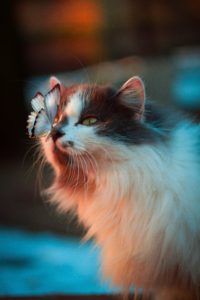
Photo by Karina Vorozheeva on Unsplash
All content on this site ©2018
Jennifer Rose
except where otherwise noted
by Jenny Rose | Jul 19, 2018 | A Flourishing Woman, The Journey
In the used bookstore in which I volunteer, I found a slim paperback book of poetry, modestly and plainly bound, entitled A Gypsy’s History of the World, by Kim Robert Stafford. It called to me and I bought it for $4.00.

Photo by Syd Wachs on Unsplash
I had never heard of this poet, but he turns out to be quite well-known and has published several books, which I’ll be looking for now. In the meantime, this book is filled with treasures.
For a couple of days I’ve been groping for this week’s post. Sometimes they come so easily, these posts. Other times I flounder. It seems that the more I have going on, the harder it is to come up with a focused essay. Irritating, but writing can be like that.
When I listen to the sound of my life this week I hear a cacophony. There are the half-excited, half-apprehensive feelings I have as the night approaches on which I’ve scheduled a local venue to once again try to start a dance group. (Will I be a good leader? Will they like me? Will anyone come?) There’s the increasing pressure I feel to find a way to earn a paycheck. There are new friends and our conversations as we strengthen our connections. (Am I talking too much? Am I offensive? Am I too blunt? Do I ask too many questions?) I’m preoccupied with family dynamics and past, present, and future possibilities and fears. (What’s the right thing to do? What’s loving? What’s useful? What will people think about me? How do I take care of everyone’s needs and expectations? How much irreparable damage will I do if I make the wrong choice?) There are my weekly activities and appointments. All the material of my daily reading swirls in my head, awaiting synthesis and integration.
In my creative world, I’m with Pele, the Earth-Shaper, sensual, passionate and angry. This week others will come to dance with her, to make offerings, to propitiate and reconnect. Revolving around her are other characters: Rumpelstiltskin the dwarf; Poseidon, the Greek god of the sea; a little brown bat called Ash and his companion, a bark beetle; the eldest of the twelve dancing princesses, Ginger; an old woman, Heks, apprentice to Baba Yaga; and Persephone, who comes to drum for the dance.
All this, and I can’t come up with a thing to post about.
I know this dynamic. The more pressure I put on myself, the harder I try, the more elusive inspiration will be.

Photo by Pascal Müller on Unsplash
It’s a foggy morning here in Maine. Foggy and oppressive with high humidity and a threat of severe weather this afternoon. I’m planning on meeting a new friend for a walk and then I’ll swim. I decided to stop trying to write a post. I turned off all the lights up here in my little attic space and lit a candle. I picked up A Gypsy’s History of the World and turned back to the beginning of the book.
Duets
A dream flips me into the daylight.
I pry my way back:
a door opens, I enter, never
escape; the jailor sings by morning
duets through the bars with me.
I wake and out my window
by dawn a blackbird sings and
listens, sings and listens.
Listen. Thistledown jumps its dance
in the wind. I’m small and have
no regrets. Yesterday is a temporary
tombstone, a hollow stalk
on the hill. I’m putting my best
ear forward; in the space between songs
I’m travelling. My hands make
whistling wings in the wind.
No things meet without music:
wind and the chimney’s whine, hail’s click
with the pane, breath in a bird’s
throat, rain in my ear when I
sleep in the grass. I miss the
whisper of a swallow’s wings
meeting the thin air somewhere far.
Branches of my voice, come back.
Inside each song
I’m listening.
At once the cacophony in my head faded away, no more than the murmur of the trees and breeze or the ocean’s breath. For a few minutes, I thought about being small and having no regrets, let alone imagining future regrets. Yesterday and yesterday and yesterday, all temporary tombstones. All my yesterdays add up to almost 20,000 hollow stalks on a hill. And yes, activities and schedules, efforts and appointments, hopes and fears, words and information, friends and family, the way the shadowed ceiling looks in a sleepless hour and the path of silent tears on their way to my pillow. All of that. But I forget about the space between all those songs. I forget that I’m traveling through this place, this life, and these landmarks.

Photo by Dakota Roos on Unsplash
Sometimes I forget to just listen to life’s music, just witness, just be present and still. Sometimes I forget to fold my hands in my lap and watch the wavering shadows the candle makes inside the song of my life. The song will not be endless. One day it will be yesterday’s song, held in a hollow stalk on a hill. I can’t reach out my hand and clutch it, pin it down, record it and make sense of it. I don’t need to. I don’t want to.
Today, friends, I’m listening.
My daily crime.
All content on this site ©2018
Jennifer Rose
except where otherwise noted



















